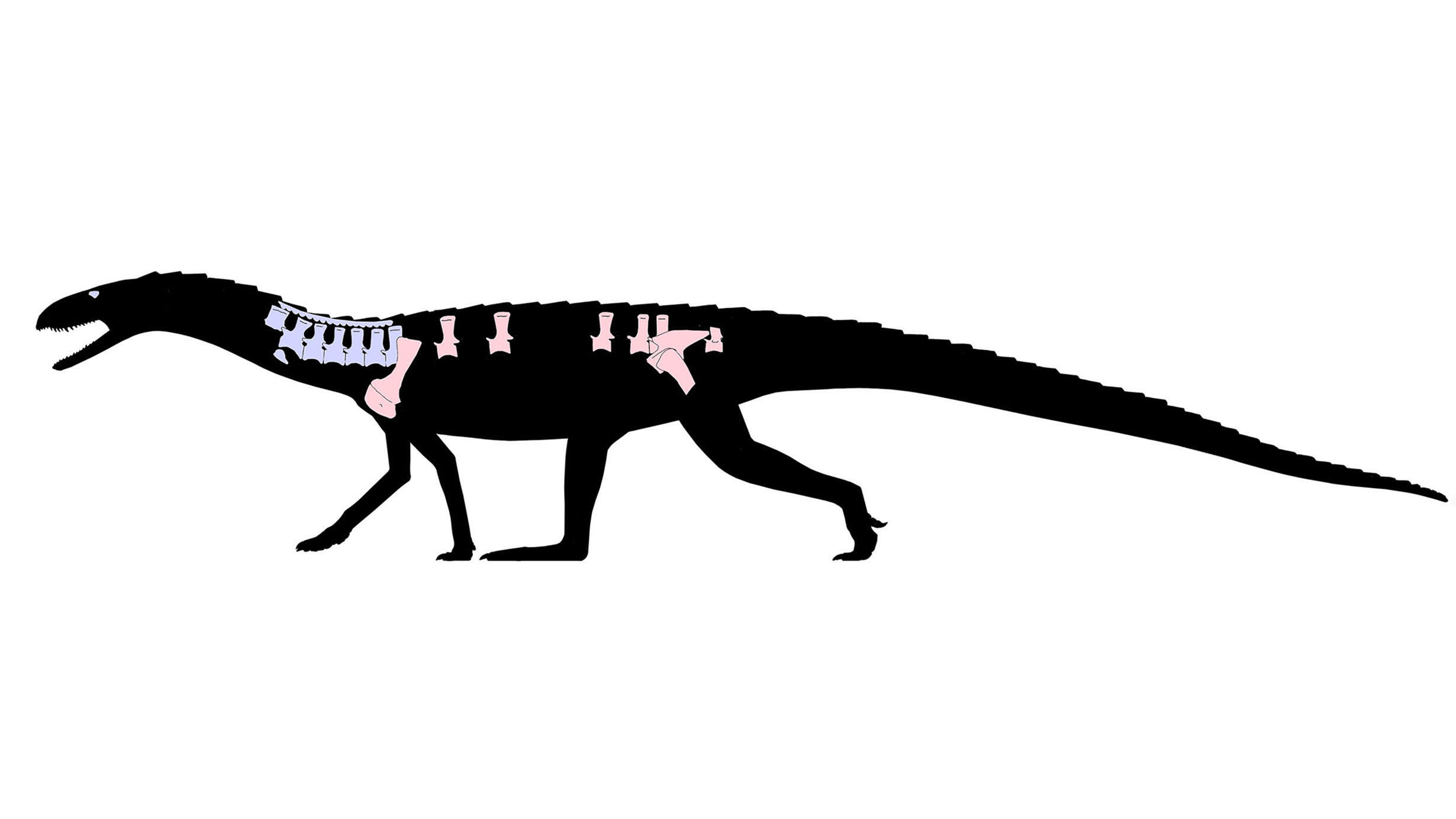 Reconstruction of Mambachiton fiandohana. Scale bar = 25 cm.
Reconstruction of Mambachiton fiandohana. Scale bar = 25 cm.Researchers have described a new species of reptile that lived near the time of the first appearance of dinosaurs and had bony plates on its backbone.
“We are just starting to understand that there were many dinosaur-like creatures across the planet well before dinosaurs evolved,” said the study’s lead author Sterling Nesbitt, associate professor of geosciences at Virginia Tech and a research associate in the American Museum of Natural History’s Division of Paleontology. “Dinosaurs were latecomers to the Triassic reptile party.”
The research, published today in the Zoological Journal of the Linnean Society, describes a 235-million-year fossil with an extensive series of bony plates called osteoderms covering its backbone. Named Mambachiton fiandohana, it is the earliest diverging member of the bird line of archosaur evolution, which includes pterosaurs, dinosaurs, and birds.
Although osteoderms are common descendants of crocodile-line archosaurs, they are rare in bird-line archosaurs, with the exception of dinosaurs like stegosaurs, ankylosaurs, titanosaur sauropods, and at least one theropod.
Mambachiton shows definitively that the bird-line archosaur group was ancestrally armored. The armor was lost in the evolution of dinosaurs and pterosaurs but then re-appeared later several times independently in the dinosaur lineage.
The fossil was found in 1997 in Madagascar by a team of researchers led by the Museum’s Frick Curator of Fossil Mammals John Flynn, who worked at the Field Museum at the time, in close collaboration with scientists and students at the University of Antananarivo in Madagascar.
“This discovery documents the importance of the southern hemisphere fossil record in understanding this important period of the Triassic, when dinosaurs were first appearing,” Flynn said. “This time interval is really poorly known elsewhere in the world, showing the tremendous value of our quarter-century long Madagascar-U.S. research and education partnership to advancing scientific knowledge.”